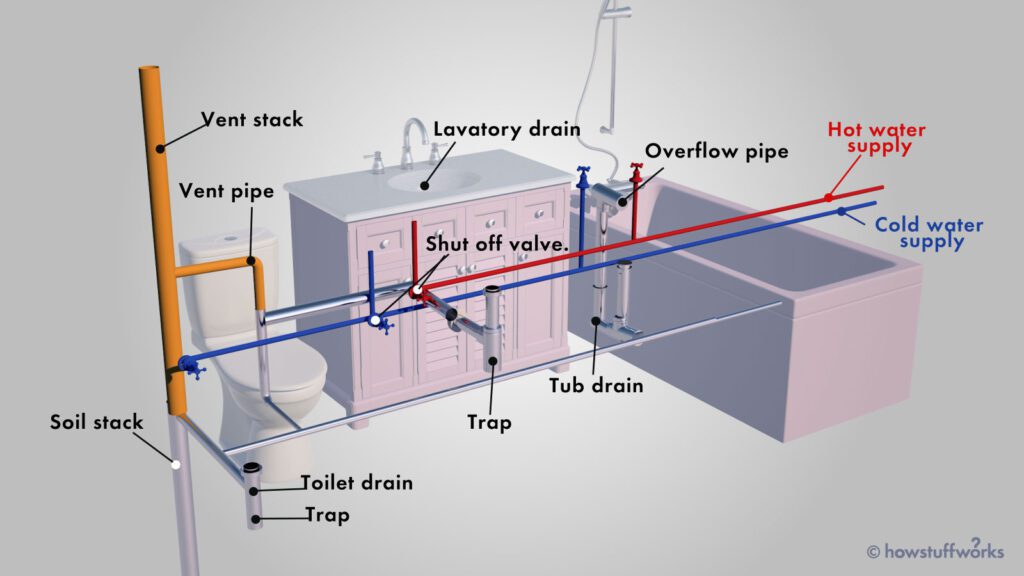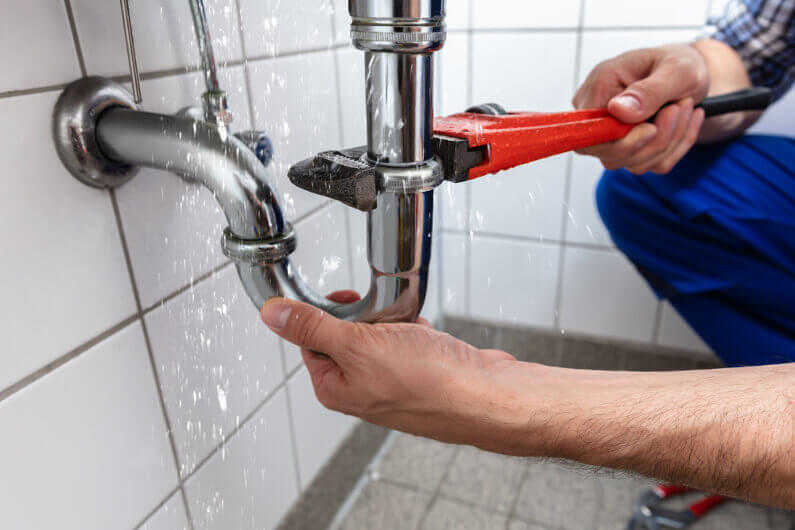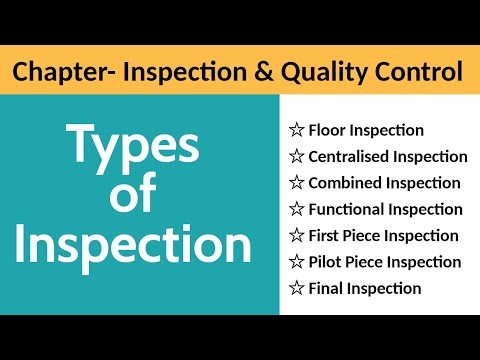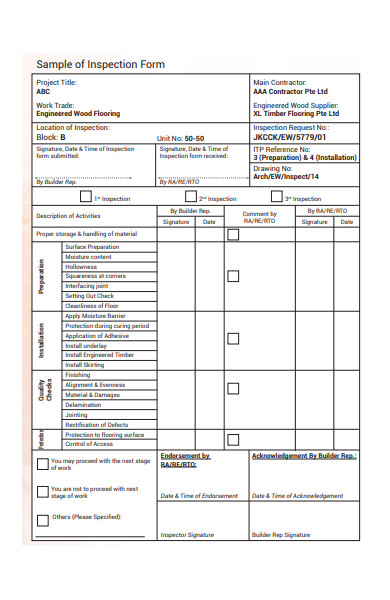In the world of quality control, the concept of 100% inspection has long been regarded as the gold standard for ensuring product excellence. However, recent research challenges the notion that inspecting every single unit guarantees an exceptional outcome. A study conducted by industry experts has revealed that despite implementing thorough inspections, the effectiveness rate hovers around 87%. This article aims to shed light on this intriguing discovery, exploring the reasons behind this seemingly contradictory phenomenon and its implications for quality control practices. So, get ready to question the prevailing beliefs about 100% inspection and uncover the truth about its true effectiveness.
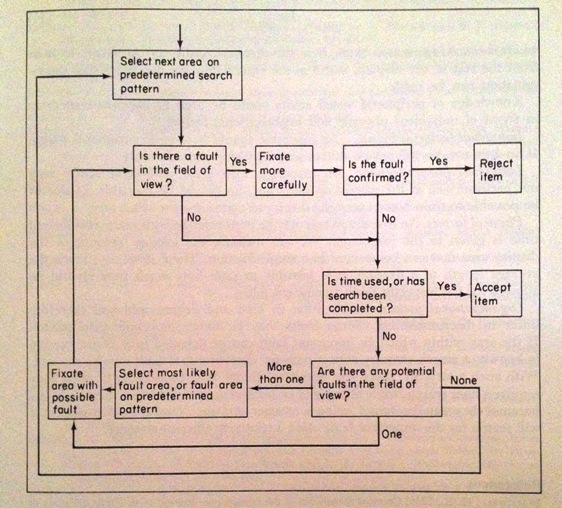

The Purpose of Inspection
The Importance of Inspection
When it comes to ensuring product quality and customer satisfaction, inspection plays a crucial role. Inspection serves as a vital quality control measure that helps identify defects, ensure compliance with standards, and minimize quality issues. It allows businesses to identify any problems or inconsistencies in their products or processes and take corrective actions to rectify them.
Defining Inspection
Inspection can be defined as a systematic process of examining, measuring, testing, or otherwise evaluating a product, process, or system against specified requirements. It aims to identify any nonconformities, defects, or deviations from the desired quality standards. Inspection can be performed at various stages of production, such as incoming inspection for raw materials, in-process inspection during manufacturing, and final inspection before shipping the product to customers.
Different Types of Inspection
There are various types of inspections based on the objectives and requirements of the specific industry or product. Some common types of inspection include visual inspection, dimensional inspection, functional testing, destructive testing, and non-destructive testing. Each type of inspection serves a different purpose and employs distinct methods and techniques to evaluate the quality and performance of the product or process.
Challenges with 100% Inspection
The Scale of Inspection
One of the major challenges with 100% inspection is the scale at which it needs to be implemented. In industries that produce a high volume of products, inspecting each individual item can be a daunting and time-consuming process. It requires dedicated resources, including manpower and inspection equipment, to handle the sheer volume of products that need to be inspected.
Time and Resources
Implementing 100% inspection requires a significant investment of time and resources. It can be a labor-intensive process, especially when dealing with complex products or intricate manufacturing processes. The need for trained inspectors, inspection equipment, and inspection facilities adds to the overall cost and effort involved in conducting inspections on every single item.
Human Error
Despite the best intentions and efforts, human error is inevitable in any inspection process. Inspectors may overlook certain defects or miss deviations from quality standards due to fatigue, distractions, or limited attention spans. This inherent human element introduces a level of uncertainty to the effectiveness of 100% inspection, as it is challenging for humans to maintain consistent levels of accuracy and attention over an extended period.
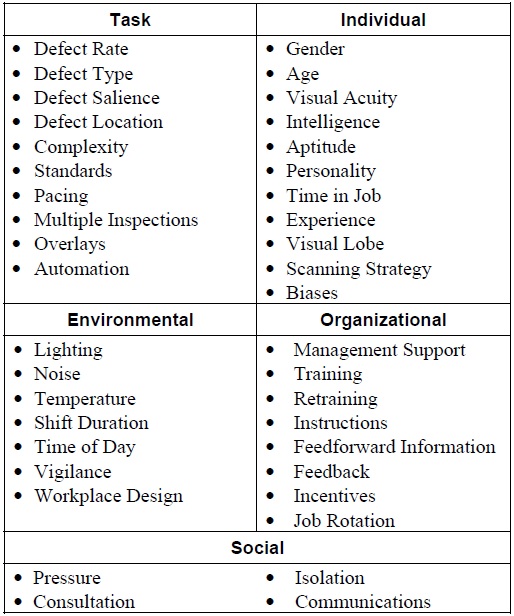

Effectiveness of 100% Inspection
Determining Effectiveness
The effectiveness of 100% inspection can be measured by its ability to identify all defects and nonconformities present in the products being inspected. If the inspection process successfully identifies every single defect, it can be considered highly effective. However, the effectiveness also depends on other factors, such as the accuracy and reliability of the inspection methods employed and the capability of the inspectors performing the inspections.
Factors Affecting Effectiveness
Several factors can influence the effectiveness of 100% inspection. The quality of the inspection equipment, the competence and training of the inspectors, and the consistency of the inspection process are all key factors. Additionally, the complexity of the product or process being inspected and the clarity and specificity of the inspection criteria can also impact the effectiveness of the inspection.
Comparing Effectiveness to Other Methods
To evaluate the effectiveness of 100% inspection, it can be compared to other quality control methods, such as sampling inspection, statistical process control (SPC), and risk-based inspection. Each method has its own advantages and limitations, and the choice of method depends on factors such as the industry, the specific product or process, and the desired level of quality assurance.
Benefits of 100% Inspection
Identifying All Defects
One of the primary benefits of 100% inspection is the ability to identify all defects and nonconformities present in the products being inspected. By inspecting every single item, businesses can ensure that no defective or substandard products reach the market. This helps to maintain a high level of quality and protect the reputation of the brand.
Minimizing Quality Issues
Another benefit of 100% inspection is its potential to minimize quality issues and customer complaints. By identifying defects in the early stages of production or during the inspection process, businesses can take immediate corrective actions and prevent further quality issues from arising. This proactive approach can help businesses avoid costly recalls, returns, or warranty claims and ensure customer satisfaction.
Ensuring Customer Satisfaction
Customer satisfaction is paramount for any business, and 100% inspection can play a vital role in achieving this goal. Through rigorous inspection, businesses can deliver products that meet or exceed customer expectations in terms of quality, performance, and reliability. This can lead to increased customer loyalty, positive word-of-mouth referrals, and a stronger competitive advantage in the market.


Limitations of 100% Inspection
Time-Consuming Process
One of the limitations of 100% inspection is its time-consuming nature, particularly in industries that produce a high volume of products. Inspecting each individual item requires significant time and resources, which can impact the production timeline and overall efficiency. Businesses need to carefully consider the trade-offs between thorough inspection and production speed when deciding on the inspection strategy.
Cost of Inspection
Implementing 100% inspection can be financially burdensome, especially for smaller businesses or those with limited resources. The cost of hiring and training inspectors, investing in inspection equipment, and setting up inspection facilities can be substantial. Businesses need to weigh the potential benefits of 100% inspection against the associated costs to determine its feasibility and cost-effectiveness.
Potential for Overlooking Defects
Despite the thoroughness of 100% inspection, there is still a potential for overlooking defects. Human error, as mentioned earlier, can impact the effectiveness of the inspection process. Inspectors may miss certain defects or nonconformities due to human limitations, such as fatigue, distractions, or inherent biases. This limitation highlights the importance of employing robust inspection methods and ensuring continuous improvement and training for inspectors.
Alternatives to 100% Inspection
Sampling Inspection
Sampling inspection involves inspecting a representative sample of products from a larger batch or population. This method aims to make statistically valid inferences about the quality of the entire batch based on the inspection results of the sampled items. Sampling inspection can be more time and cost-efficient compared to 100% inspection, while still providing a high level of confidence in the quality of the batch.
Statistical Process Control
Statistical process control (SPC) focuses on monitoring and controlling production processes to ensure they are within specified quality limits. SPC utilizes statistical techniques to analyze process data and identify any trends, variations, or abnormalities that may indicate potential quality issues. By proactively managing process variability, SPC aims to prevent defects and minimize the need for extensive post-production inspections.
Risk-Based Inspection
Risk-based inspection involves assessing the risk associated with different elements of the product or process and prioritizing inspections accordingly. This method takes into account factors such as the potential impact of failure, the likelihood of occurrence, and the control measures in place. By focusing inspections on high-risk areas, businesses can allocate resources more effectively and efficiently while still ensuring product quality and safety.
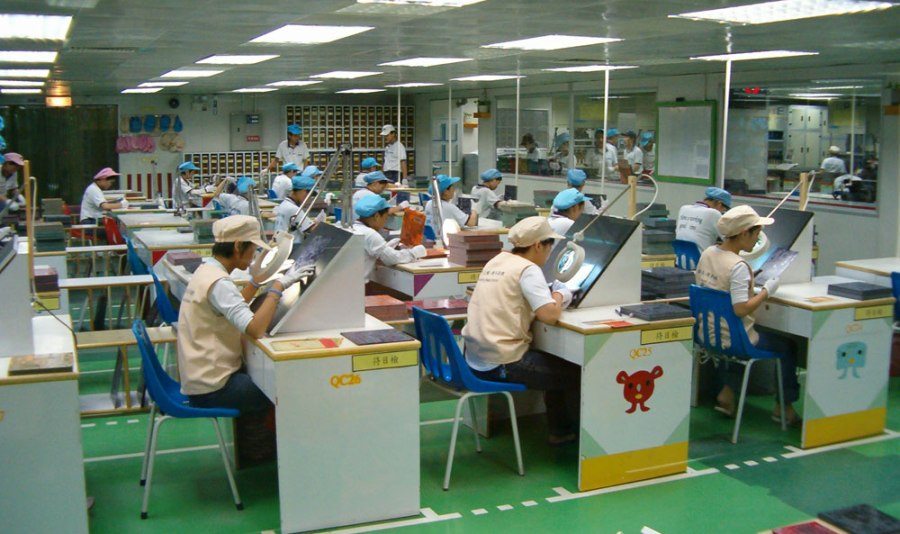

Case Studies on 100% Inspection
Successful Implementations
Several industries have successfully implemented 100% inspection as part of their quality control strategies. For example, in the automotive industry, 100% inspection is often conducted for critical components such as brakes or airbags to ensure maximum safety. Similarly, in the pharmaceutical industry, 100% inspection is commonly performed on drug packaging to guarantee accurate labeling and proper dosage.
Failure and Lessons Learned
While 100% inspection can be effective, there have been instances where it has failed to prevent quality issues or product failures. One such example is the case of the Samsung Galaxy Note 7 smartphones, which faced battery-related issues resulting in explosions and recalls. Despite thorough inspection processes, certain design and manufacturing flaws went undetected, leading to significant financial losses and damage to the brand’s reputation. Lessons learned from failures like these drive continuous improvement and highlight the need for complementary quality control measures.
Industry-Specific Examples
Different industries have unique requirements and standards when it comes to inspection. In the food industry, for instance, 100% inspection is crucial to identify any contamination, foreign objects, or spoilage that could impact food safety. In the aerospace industry, 100% inspection is conducted on critical aircraft components to ensure compliance with stringent safety regulations. These industry-specific examples emphasize the importance of tailoring inspection approaches to meet the specific needs and risks of each industry.
Improving the Effectiveness of 100% Inspection
Automation and Technology
Leveraging automation and technology can significantly enhance the effectiveness of 100% inspection. Automated inspection systems, such as machine vision systems or robotic inspection equipment, can perform inspections with higher speed, accuracy, and consistency than human inspectors. Furthermore, data analysis tools and artificial intelligence can help identify patterns or anomalies from inspection data and enable predictive maintenance or early defect detection.
Training and Skill Development
Investing in the training and skill development of inspectors is crucial for improving the effectiveness of 100% inspection. Well-trained inspectors are more equipped to identify defects accurately, adhere to inspection criteria, and minimize human error. Providing ongoing training on inspection techniques, equipment operation, and quality standards ensures that inspectors stay updated with the latest industry practices and enhance their performance.
Continuous Improvement
Emphasizing continuous improvement in the inspection process is vital for maximizing its effectiveness. Regularly reviewing and analyzing inspection results, identifying recurring quality issues, and implementing corrective actions can help address root causes and prevent future defects. Employing quality improvement methodologies such as Six Sigma or Lean can further streamline processes, reduce waste, and enhance overall inspection effectiveness.


Expert Opinions on 100% Inspection
Supportive Arguments
Supporters of 100% inspection argue that it provides the highest level of quality assurance by inspecting every single item. They believe that thorough inspection is essential, especially in industries where product failure can have severe consequences, such as healthcare or aerospace. They also highlight the value of 100% inspection in identifying potential defects before they reach customers and protecting the brand reputation.
Critical Perspectives
Critics of 100% inspection question its cost-effectiveness and practicality, particularly in industries with high production volumes. They argue that other quality control methods, such as sampling inspection or statistical process control, can provide similar levels of quality assurance at a lower cost. Critics also highlight the inherent limitations of human inspectors and emphasize the importance of complementary quality control measures to ensure product reliability.
Balancing Different Viewpoints
Finding the right balance between 100% inspection and other quality control methods is essential. While 100% inspection offers comprehensive defect detection, it may not be feasible or practical in all situations. Understanding the specific needs, risks, and resources of each industry or product can help businesses determine the most suitable inspection strategy. It is important to weigh the benefits and limitations of each method and employ a combination of approaches to achieve optimal quality control.
Conclusion
Is 100% inspection 87% effective? The effectiveness of 100% inspection cannot be quantified with a single percentage value, as it depends on various factors such as industry requirements, inspection methods, and human factors. While 100% inspection is undoubtedly thorough and capable of identifying all defects, it comes with challenges in terms of scale, time, resources, and potential human error.
Businesses should carefully evaluate the benefits and limitations of 100% inspection in their specific contexts and consider alternative quality control methods such as sampling inspection, statistical process control, or risk-based inspection. Leveraging automation, training, and continuous improvement can enhance the effectiveness of 100% inspection. Balancing different viewpoints and understanding the trade-offs between thorough inspection and production efficiency is crucial for achieving optimal quality control and ensuring customer satisfaction.



